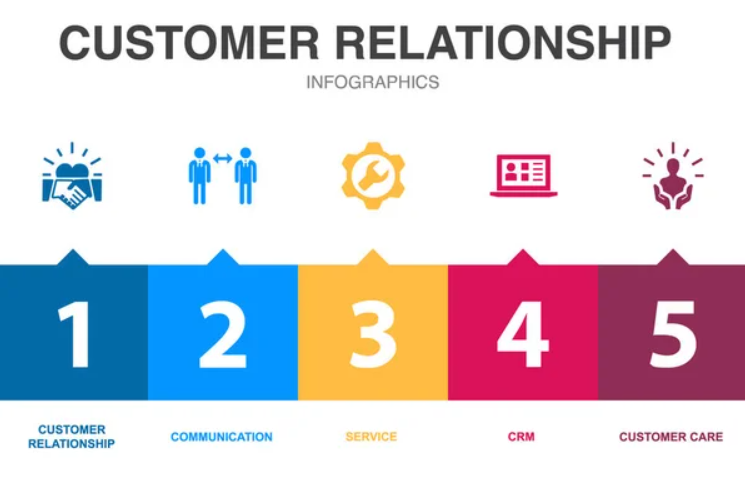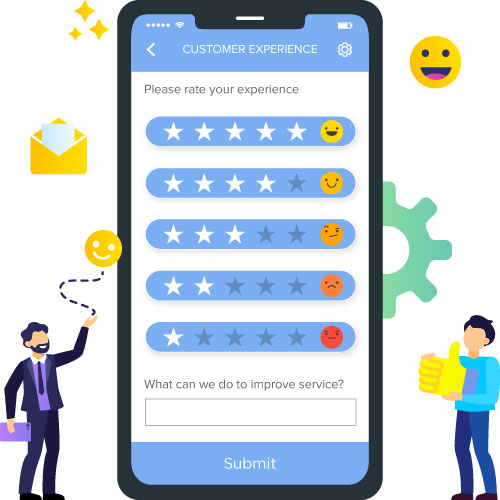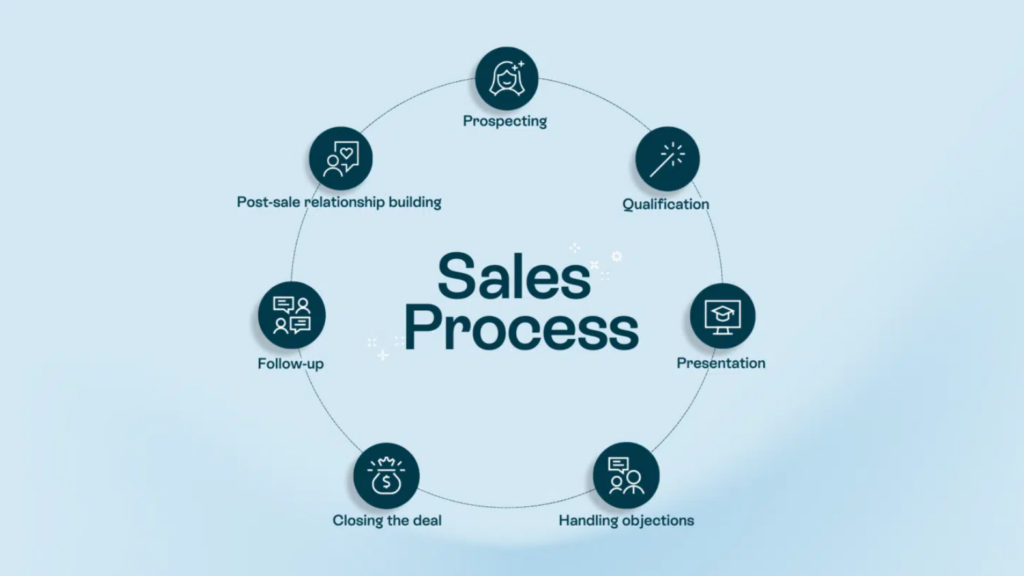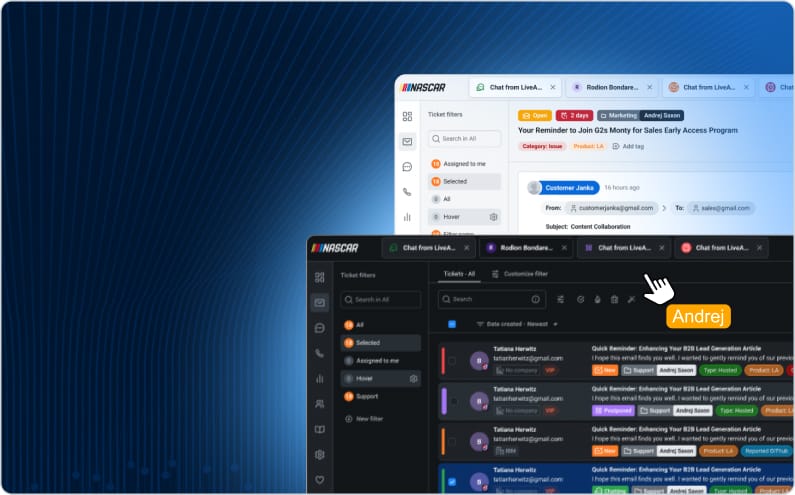You’ve probably heard the term “customer relations,” but what does it mean? And why do companies care so much about building long-lasting customer relationships? To answer these questions, we will start with the definition and continue exploring the difference between customer relations and customer service, as well as the key factors that affect them. Not only that, our staff will also share valuable tips to help you improve your customer relations strategy. Just keep reading to find out more.
Key takeaways
- Customer relations involve interactions that build long-lasting customer relationships, enhancing loyalty and satisfaction.
- Customer relations include proactive and reactive measures, while customer service addresses immediate issues.
- Support, product quality, employee training, communication, feedback, and personalization are key factors in customer relations.
- Positive customer relations require tailored strategies during pre-sale, sale, post-sale, upsell, and potential churn phases.
- Enhance customer relations with transparency, understanding needs, proactive communication, personalized support, and tools like LiveAgent.
What is customer relations?
Customer relations are ways the brand interacts with its customers to build and maintain strong, long-lasting relationships. It involves every touchpoint a customer has with the business, from initial contact to post-purchase support. The goal is to create positive experiences that lead to customer loyalty and satisfaction.
Effective customer relations help companies improve customer satisfaction by promptly and effectively addressing their needs and concerns. When customers feel valued and understood, they are more likely to return and recommend the business to others. Consistent positive interactions can turn one-time buyers into lifelong customers.
Implementing customer relations strategies can have several benefits. For example, businesses see better reviews on review portals, which attracts new customers thanks to the positive user experiences. Higher customer satisfaction also leads to increased sign-ups for trials or loyalty programs, as happy customers are more likely to trust and invest in your offerings. This ultimately results in higher revenue and growth for the company.

Difference between customer relations and customer service
Customer service is what your company provides to ensure customer success and a positive experience, usually after the customer reaches out with an issue or question. For example, when a customer contacts a tech support team to fix a faulty product, they engage with customer service.
Customer relations consists of both inbound and outbound measures. It reacts to present issues and improves future experiences by taking proactive steps to engage customers and improve their overall experience. For instance, sending regular follow-up emails to check in on customer satisfaction or hosting loyalty programs are examples of good customer relations.
Companies can use the data gathered from customer service interactions to foster customer relations. Analyzing this data allows businesses to proactively address potential problems before impacting the customer, ultimately enhancing the customer’s overall journey.
6 factors affecting business’s customer relations
Customer relations are affected by various factors that can make or break the bond between a brand and its customers. Here are some of the main factors:
Customer support
Delivering outstanding customer support can turn a frustrated customer into a loyal advocate. On the other hand, poor support can damage the relationship and drive customers away. 81% of customers say a positive customer service experience increases their likelihood of repeat purchases.
Customer support agents should possess soft skills such as empathy, patience, and effective communication, which help them connect with customers more personally.
Consider implementing powerful customer service software like LiveAgent to improve your customer support processes. These tools can streamline support processes and help resolve customer issues more efficiently.
Product or service quality
High-quality offerings create higher value and boost customer satisfaction, laying the groundwork for long-term loyalty. Prioritize quality by consistently aiming to exceed customer expectations.
Customers who feel they are getting more than they paid for are likelier to stay loyal. Businesses that focus on delivering exceptional value can foster positive customer relations and word-of-mouth referrals, creating a cycle of trust and engagement.
Employee training and satisfaction
Properly trained employees are better equipped to handle customer inquiries and issues impacting customer satisfaction. Training your employees also ensures they have the necessary skills and knowledge to provide top-notch service.
Remember that employee satisfaction is also crucial. Happy employees are more likely to provide outstanding service. When your team feels valued and satisfied with their work environment, they are motivated to go above and beyond. This positive attitude can significantly enhance customer interactions, leading to better customer relations and higher retention rates.
Communication
Communication is the cornerstone of solid customer relations. Practical, transparent, and proactive communication helps build trust and ensures customers feel heard and understood. Approximately 85% of customers want businesses to proactively communicate and anticipate their needs. This shows them that your company genuinely cares about their experience.
To foster excellent customer relations, make sure to:
- Keep customers informed about updates, issues, and solutions. Use clear and concise language, and respond promptly to inquiries.
- Avoid using jargon or complex terms that can confuse customers. Never leave customers in the dark about issues or delays – transparency is vital.
Feedback mechanism
Gathering customer feedback gives you valuable insights into what they like and what needs improvement. You can collect feedback using various methods, such as surveys, feedback forms, social media, review portals, and direct conversations.
However, asking for feedback is only half the battle. The real impact comes from implementing changes based on that feedback. Adjustments and improvements to your products/services demonstrate that you are listening and reacting to customer needs, strengthening customer relations.

Personalization
The impact of personalization on customer relations should be considered. Statistics show that 80% of buyers are more likely to purchase when brands offer personalized customer experiences.
So why is personalization so crucial? It makes customers feel valued. Businesses can personalize their products and services by tailoring recommendations based on past purchase behavior, sending personalized emails, or offering special discounts on birthdays. When customers see that a brand pays attention to their individual needs and preferences, it reinforces the relationship and encourages loyalty.
Examples of positive customer relations during each sale phase
Building and maintaining positive customer relationships involves several phases: pre-sale, sale, post-sale, upsell, and potential churn. Each phase requires a tailored strategy to ensure customers feel valued every step of the way. By doing so, businesses can anticipate needs, address concerns, and proactively offer solutions, fostering a solid customer bond.

Pre-sale phase
Transparent communication
Being transparent means being open and honest with potential customers right from the start. During this phase, asking customers questions is essential to understand their needs fully. For example, ask what specific features they are looking for or what problems they need to solve. Their answers help you determine if your offering is a good fit for them.
Being transparent at this stage is crucial. Customers may feel misled if you’re not honest about what your product can and cannot do, leading to disappointment, negative reviews, and lost trust. In contrast, transparent and honest communication sets the right expectations and builds a foundation for a strong customer relationship.
Offer free trials and demos
Free trials or demos during this phase allow potential customers to experience your product or service firsthand. This hands-on approach helps them understand its features and benefits, making it easier to trust your offering. It’s also important to be accessible during these trials to answer customers’ questions.
At LiveAgent, our support team is available 24/7, which shows our commitment to helping our customers get the most out of the product. This builds confidence in the brand, sets the stage for a positive, long-term customer relationship, and increases the chance of moving to the sale phase.
Sale phase
Personalized assistance
Personalization is tailoring your interactions and offerings to each customer’s needs and preferences. Personalized assistance involves understanding and proactively addressing your customers’ unique requirements.
You can start by greeting customers by name and referencing their past interactions with your business. For example, a sales representative might say, “I see you recently looked at our smart watch section. We have a new model with advanced features that might be just what you want.” This level of detail shows that you know your customers and understand their interests. Adding personal touches like these can strengthen customer relationships, improve conversion rates, encourage loyalty, and drive business growth.
Easy purchase process
Creating a seamless and straightforward purchase process is crucial to driving sales. Customers may become frustrated and abandon their carts if the purchase process isn’t simple. To make it simple for customers, start by minimizing unnecessary steps. For example, your online checkout process should be straightforward and allow guest checkouts, reducing the need for customers to create an account.
Avoid complicated payment options and offer multiple, commonly used payment methods, such as credit/debit cards, PayPal, and digital wallets like Apple Pay or Google Pay. Clearly display all costs, including shipping and taxes, on a single page before the final purchase. This transparency helps customers feel confident and reduces cart abandonment rates.
Special offers and discounts
Providing personalized offers and discounts during the sale phase can be a powerful motivator to convert potential customers. These offers should be relevant and appealing to the customer to be effective. For instance, if a customer has shown interest in a specific product category, offer a discount on that category. This can increase the likelihood of purchase because the offer aligns with their interests.
Similarly, if a customer often visits your website but has yet to make a purchase, you could send them a personalized offer for first-time buyers to encourage them to complete their purchase. Making these offers relevant to each customer’s interests and behavior increases sales and enhances the customer experience.
Post-sale phase
Onboarding and training
Onboarding and training sessions after a sale are about guiding new customers on how to use your product or service effectively. This process ensures customers maximize their purchase’s value, reducing potential frustration or confusion. When customers know how to use a product well, they are more likely to be satisfied and see the value, leading to higher satisfaction and lower return rates.
You can create detailed user manuals, video tutorials, or interactive guides that walk customers through the product’s features step by step. For example, a software company might offer webinars or live training sessions where customers can ask questions and get real-time assistance.
Follow-up communication and aftercare
Following up with customers after a purchase is crucial for maintaining strong customer relations. Check-in with them to express gratitude for their purchase and to see if they have any questions or feedback. A quick thank you email or phone call can make customers feel valued and appreciated.
Additionally, you can ask if they need help setting up certain features or if they have encountered any issues. For example, you might email, “Thank you for purchasing our product! We hope you’re enjoying it so far. Do you need any assistance setting up any specific features? We’re here to help!” This proactive approach demonstrates your commitment and builds trust.
At LiveAgent, we ensure regular check-ups with our customers to maintain high satisfaction levels. Customers who purchase enterprise plans are also assigned a personal account manager to provide tailored support and care. Meanwhile, our sales team continuously evaluates software usage and functionality data to identify areas for improvement and proactively address any issues. This approach ensures that our customers receive top-notch service and achieve the best possible results with our software.
Upsell
Personalized recommendations
In this phase, you can suggest products or services that complement what a customer has already bought and clarify how these additional options can add value. For instance, if a customer has purchased a basic software package, recommend an advanced add-on that offers extra features to streamline their workflow. Personalizing these recommendations increases the likelihood of additional purchases.
The best time for an upsell is after the customer has had a positive experience with their initial purchase. It usually happens once they have fully integrated the product or service into their routine and seen its benefits. Timing the upsell when the customer is already happy and confident in their purchase increases the chances of success.
Exclusive offers
Offering exclusive discounts or special offers to upsell can encourage customers to make additional purchases. For example, you might offer a special discount on a premium version of a product they already use or a bundle deal that includes complementary items at a reduced price.
Potential churn phase
Identify at-risk customers
To prevent churn, you need to identify customers at risk of leaving. Use data analytics to spot signs such as decreased product usage, negative feedback, or repeat complaints. By identifying these signs early, you can proactively retain these customers.
At LiveAgent, we provide consultations for at-risk customers to ensure they can use the platform entirely and try to gather feedback on their experience. We ask why they might be considering leaving, such as issues with bugs or missing features. Based on this feedback, we can identify if these things can be improved and resolved to enhance their experience and prevent them from churning.
Offer incentives
Contact at-risk customers with personalized messages, acknowledging their concerns and expressing your commitment to improving their experience. Ask for specific feedback on improvements, showing that their opinions are valued.
Offer special incentives like discounts, bonus features, or a free month of service to encourage them to stay. Personalized attention and valuable incentives can turn a potential churn situation into an opportunity for renewed customer loyalty.
Tips for improving customer relations from our staff
In this section, we want to share valuable tips from our LiveAgent team. These recommendations will help you elevate your customer relations and ensure your customers feel valued every step of the way.
Andrej Saxon, our sales expert, recommends:
- Make customers feel comfortable and always try to help them, even when you are in a situation when you cannot.
- Care about your customer opinion.
- Always ask if the answer you gave was clear to the customer.
- Take your time and proactively reach out to customers from time to time.
- Feel free to offer your time for consultations when your customer needs it.
Our sales expert, Michaela Gombarová, recommends:
- Always be transparent and inform your customers about any product or service changes.
- Make sure you understand your customers’ needs and ensure that you can meet them to align their expectations with your delivery.
- Always go above and beyond with a white-glove approach to make your customers feel truly valued.
Conclusion
Understanding customer relations and customer service is crucial for building sustainable and valuable client relationships. Customer relations involve the ongoing effort to foster positive interactions and trust, not just when you’re aiming for a sale. Cultivating these relationships throughout all customer journey phases can significantly impact your business.
If your business needs help to create long-lasting customer relationships, consider looking into crucial factors like customer support, product quality, and communication strategies. Improvements in these areas can lead to happier, more loyal customers. Additionally, remember that the entire process is divided into multiple phases. Develop a strategy for each phase—pre-sale, sale, post-sale, upsell, and potential churn—to ensure comprehensive and positive customer relations.
You can also use powerful tools like LiveAgent to boost customer relations by providing excellent customer support. With real-time chat, ticketing systems, and automated workflows, LiveAgent ensures your customers receive timely and effective assistance. Try LiveAgent’s 30-day free trial and see the difference firsthand!
Transform your customer relations with LiveAgent!
Elevate your customers' experiences using our powerful customer service software. Seamlessly manage inquiries, provide instant support, and keep your customers delighted. Sign up for a 30-day free trial and start building lasting relationships!
Frequently Asked Questions
How to define customer relations?
Customer relation is a relationship that is created between the company and the customer. Relationships on this line are extremely important to the company's success. Thanks to building good, lasting relationships based on trust, the company has a chance to succeed.
How does social media affect customer relations?
In the context of customer relations, social media platforms provide a space for customers where they can express their opinions publickly. Effective communication, engagement, and resolution can have a positive impact on relationships, while mishandling interactions can damage customer relations and brand reputation.
Are customer relations important for a company?
Customer relations should be the most important thing for the company. Thanks to good relationships, the company retains customers and brings value from them. For a good relationship, the most important thing is to provide first-class customer service. Thanks to this, the client feels taken care of and has confidence in the company. Besides, it is an ideal source of feedback.
How to improve customer relations?
In order to develop a relationship with the client, first of all you need to take care of the client. Treat them individually and understand his needs. The brand must inspire the customer's trust, and it will be done, among others, thanks to the fact that its activities will be transparent and will also act honestly. It's better to admit something isn't working than to hide it. When building a relationship, you shouldn't think primarily about selling. The main thing is to build this relationship and the sale will be a form of a side effect.
After exploring the ins and outs of customer relations, you might be curious about the nuances that differentiate customer relations from customer service. Delve into the key factors that shape successful interactions and discover practical tips to enhance your approach. To further enrich your understanding, dive into the world of customer care. Learn why it's crucial for brand image and trust, and uncover best practices that set industry leaders apart.
Customer service vs. customer support: Differences and tips
Discover the key differences between customer service and support, essential for boosting satisfaction and loyalty. Get expert tips now!
Discover the essential features and benefits of customer service centers with LiveAgent. Learn how they manage all types of customer communication, from emails to live chats, and enhance your service with cutting-edge tools. Start a free trial today to improve customer satisfaction and loyalty effortlessly.

 Български
Български  Čeština
Čeština  Dansk
Dansk  Deutsch
Deutsch  Eesti
Eesti  Español
Español  Français
Français  Ελληνικα
Ελληνικα  Hrvatski
Hrvatski  Italiano
Italiano  Latviešu
Latviešu  Lietuviškai
Lietuviškai  Magyar
Magyar  Nederlands
Nederlands  Norsk bokmål
Norsk bokmål  Polski
Polski  Română
Română  Русский
Русский  Slovenčina
Slovenčina  Slovenščina
Slovenščina  简体中文
简体中文  Tagalog
Tagalog  Tiếng Việt
Tiếng Việt  العربية
العربية  Português
Português 









